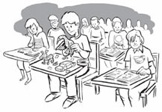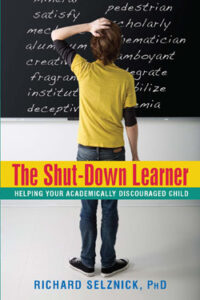 A book that always stayed with me reminding me of my early days as a psychologist at the Hill Top Preparatory School, a private school in the Philadelphia Suburbs for high schoolers with learning disabilities, is Betty Osman’s, “No One to Play With: The Social Side of Learning Disabilities.” Even though the book came out in the mid 1980’s, it’s as relevant today as it was then.
A book that always stayed with me reminding me of my early days as a psychologist at the Hill Top Preparatory School, a private school in the Philadelphia Suburbs for high schoolers with learning disabilities, is Betty Osman’s, “No One to Play With: The Social Side of Learning Disabilities.” Even though the book came out in the mid 1980’s, it’s as relevant today as it was then.
With dyslexia and other learning problems, we often don’t consider the social/emotional side of things. Too many of these kids feel a lot of embarrassment and often find themselves with “no one to play with.”
Along with learning disabilities, these kids often show ADHD type of behaviors and they frequently have trouble navigating the social waters around them.
Back in the Hill Top days, the students and staff often had lunch together and casually socialized. The boundaries between student and staff often blurred as the topics whirred around, but it was great fun and I think that all of us (staff and students) learned a lot from each other.
For some of the kids with social issues, having a staff member they could “hang with” seemed to make a big difference in their self-esteem.
In this era of outcome measurements and evidenced-based education, I don’t hear that much focus on such intangibles.
How do you measure the impact that having lunch with a kid has on their social/emotional development?
You don’t, really.
The impact is immeasurable. It can’t be quantified.
***Please note: Comments are blocked by the hosting site. Please email questions or comments. (See below.)
 Copyright, Richard Selznick, Ph.D. 2022, www.shutdownlearner.com.
Copyright, Richard Selznick, Ph.D. 2022, www.shutdownlearner.com.
To Contact Dr. Richard Selznick for advice, consultation or other information, email rselznick615@gmail.com.
To receive future blog posts, register your email: https://shutdownlearner.com.
